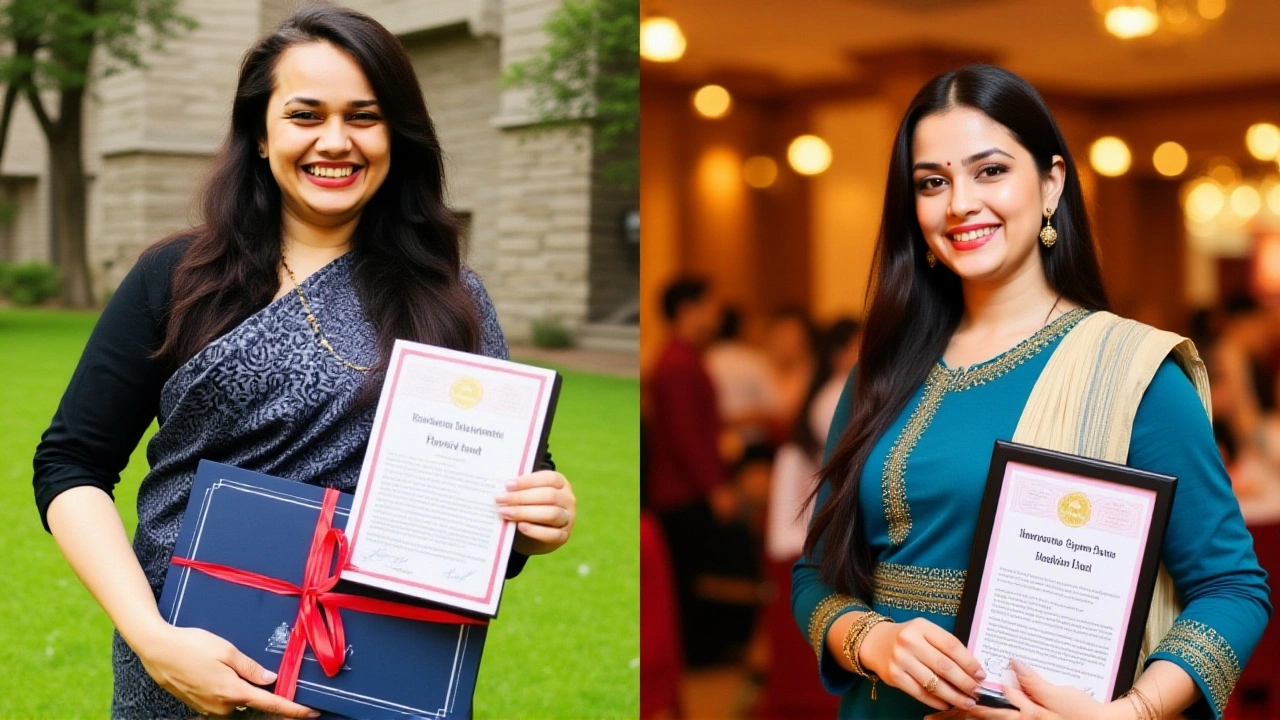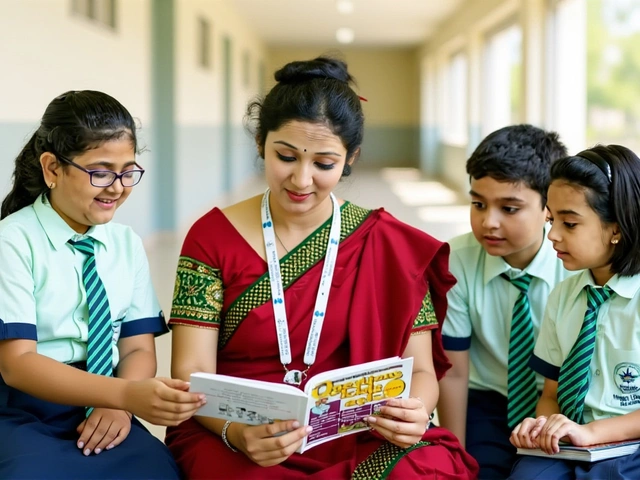Tina Dabi to Be Honored for Boosting Rajasthan’s Gender Ratio to Historic High of 932
When Tina Dabi, District Collector of Barmer, walked into her office on January 12, 2025, she didn’t expect a call from the Election Department — not because she didn’t work hard, but because the change she helped engineer was so quiet, so steady, it almost felt invisible. Yet, by the end of the week, she’d be one of five district officials honored for turning the tide on gender bias in one of India’s most stubbornly patriarchal regions. The numbers don’t lie: Barmer’s gender ratio jumped from 924 girls per 1,000 boys in October 2024 to 932 in January 2025 — the highest ever recorded in Rajasthan’s modern history. And it wasn’t luck. It was paperwork, persistence, and people.
Behind the Numbers: How a District Changed Its Soul
The gender ratio isn’t just a statistic. It’s the echo of centuries of preference for sons — of hidden abortions, of girls sent away, of families who didn’t register births because they feared the cost of raising a daughter. Rajasthan, once among the worst performers, had hovered near 879 in 2011. Even by 2020, it was still below 920. So when the state’s Chief Election Officer, Naveen Mahajan, announced the jump to 932, it wasn’t just progress — it was a seismic shift.
The secret? Voter list audits. Not rallies. Not slogans. Not even government ads. District collectors like Dabi sent teams door-to-door, verifying identities, correcting names, and — crucially — registering girls as eligible voters. In Barmer, teams visited 47,000 households in three months. They found 12,000 unregistered girls between ages 16 and 18. Many had never been formally documented. Some families didn’t know they needed to. Others feared the stigma of having a daughter on official records. Dabi’s team didn’t just collect forms. They brought tea. Sat with mothers. Talked to grandmothers. Changed minds, one cup at a time.
The Five Who Moved the Needle
Dabi wasn’t alone. The Election Department named four others: Neelabh Saxena (Karauli), Rohitashva Singh Tomar (Baran), Akshay Godara (Bundi), and Devendra Kumar (Dausa). Each saw their district’s gender ratio rise by 6 to 11 points. But Barmer’s leap was the most dramatic — and the most symbolic. Why? Because Barmer is a desert district. Water is scarce. Education is uneven. Girls often drop out by 14. The fact that 1,100 more girls were registered as voters here in just three months? That’s a revolution.
And it wasn’t just gender. The electoral population ratio — the proportion of eligible voters to total population — climbed from 650 to 663. That means more people, especially young women, were now part of the democratic process. Not just as future voters, but as recognized citizens. Dabi’s team even tracked down 3,200 women who’d been erased from records after marriage. They re-registered them under their maiden names — a small act, but one that restored identity.

A Leader Who Refuses to Be Just a Name
Tina Dabi isn’t new to making headlines. As a 2015 UPSC topper — the first woman to top the exam in over a decade — she was already a symbol. But she’s never leaned on fame. In Jaisalmer, she built 87,000 rainwater tanks after 64 women died trying to fetch water from deep, unsafe wells. In Jaipur, as Commissioner of the Employment Guarantee Scheme, she cut corruption by 40% in six months. Now in Barmer, she’s done something quieter, deeper: she made girls visible.
Her personal life is no less remarkable. Married twice — first to IAS officer Athar Aamir Khan, then to Dr. Pradeep Gawande, also an IAS officer — she’s a mother to a 15-month-old son. Her husband was transferred to Jalore, 150 kilometers away, while she stayed in Barmer. They’ve never let distance break their rhythm. She wakes at 4:30 a.m. to feed her son before heading out. At night, she reads voter registration forms by candlelight when the power cuts out — which, in Barmer, happens often.
She also filed an FIR against fake social media accounts impersonating her. “I don’t want to be a meme,” she told a local reporter. “I want to be a reason a girl in Barmer believes she belongs in the voting booth.”
What This Means for Rajasthan — and India
Rajasthan’s total registered voters now stand at 5,45,69,501 — the highest ever. That’s more than the population of Canada. And for the first time, the state’s gender ratio is climbing faster than the national average. The 2011 census showed 943 girls per 1,000 boys nationally. Rajasthan was at 879. Now, it’s at 932 — and still rising.
This isn’t just about elections. It’s about legacy. When a girl is registered to vote, her parents start thinking: What if she becomes a doctor? A teacher? A collector? The fear of raising a daughter begins to dissolve — not because of laws, but because of proof. Proof that she matters.
The award ceremony, set for January 24, 2025, the day before National Voters’ Day, will be held in Jaipur. But the real celebration is happening in Barmer’s villages, where mothers now proudly show their daughters’ voter ID cards. One woman, Lata Devi, told a field officer: “I used to hide my daughter’s birth certificate. Now I frame it.”

What Comes Next?
The state government has already announced a pilot program to replicate Dabi’s model in 12 more districts. Training modules are being developed based on Barmer’s door-to-door outreach. Meanwhile, Dabi is quietly pushing for a digital registry that links birth certificates with voter IDs — so no girl ever slips through again.
And the irony? She didn’t set out to fix the gender ratio. She set out to make sure every eligible voter was counted. The rest? That was just the result of treating people like citizens — not statistics.
Frequently Asked Questions
How did Tina Dabi improve Barmer’s gender ratio without new laws?
Dabi’s team didn’t rely on legislation — they relied on grassroots verification. Teams visited 47,000 homes over three months, identifying 12,000 unregistered girls aged 16–18. Many families didn’t know they needed to register daughters, or feared social stigma. The team built trust by listening, sharing meals, and helping with paperwork — turning bureaucratic tasks into human conversations.
Why is the electoral population ratio important?
The electoral population ratio measures how many eligible voters exist relative to the total population. A rise from 650 to 663 means more people — especially women and youth — are now officially recognized as part of the democratic system. It signals lower disenfranchisement and stronger civic inclusion, which are foundational to a healthy democracy.
What’s the historical context of Rajasthan’s gender ratio?
In 2011, Rajasthan’s gender ratio was just 879 girls per 1,000 boys — far below the national average of 943. Even in 2020, it hovered around 920. The jump to 932 in early 2025 is the largest single-year improvement in over a decade, marking a turning point after decades of gender discrimination, selective abortions, and under-registration of female births.
How does this connect to Tina Dabi’s earlier work?
Dabi first gained national attention for her ‘Tanka Model’ in Barmer, which built over 87,000 rainwater tanks after 64 women died fetching water in 2022. That initiative saved lives — this one saves futures. Both projects share the same philosophy: empower women by addressing systemic neglect, not just symptoms. Water access gave dignity; voter registration gives voice.
Will this model be replicated elsewhere?
Yes. Rajasthan’s Election Department is launching a pilot in 12 other districts based on Dabi’s door-to-door verification method. Training materials are being developed, and a digital registry linking birth certificates to voter IDs is under design. The goal: ensure no girl is ever erased from the system again.
Why is this award significant beyond Rajasthan?
This is the first time a state has tied electoral integrity directly to gender equity — and rewarded administrators for it. India’s national voter registration drives often overlook rural girls. Barmer’s success proves that local leadership, not top-down mandates, can change deep-seated norms. It’s a blueprint for states like Bihar, Jharkhand, and Uttar Pradesh, where gender ratios remain critically low.







